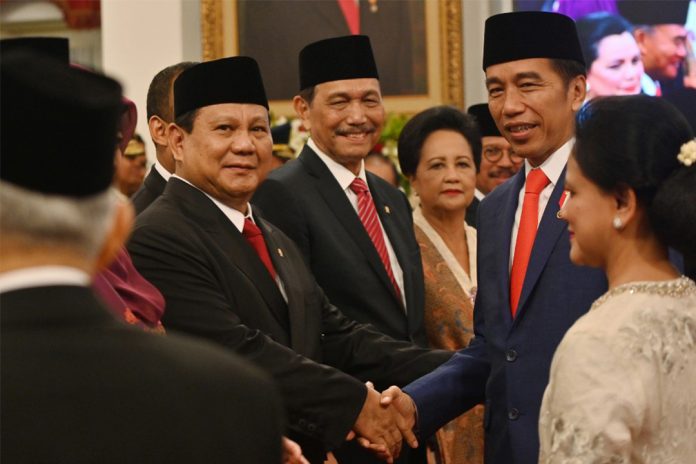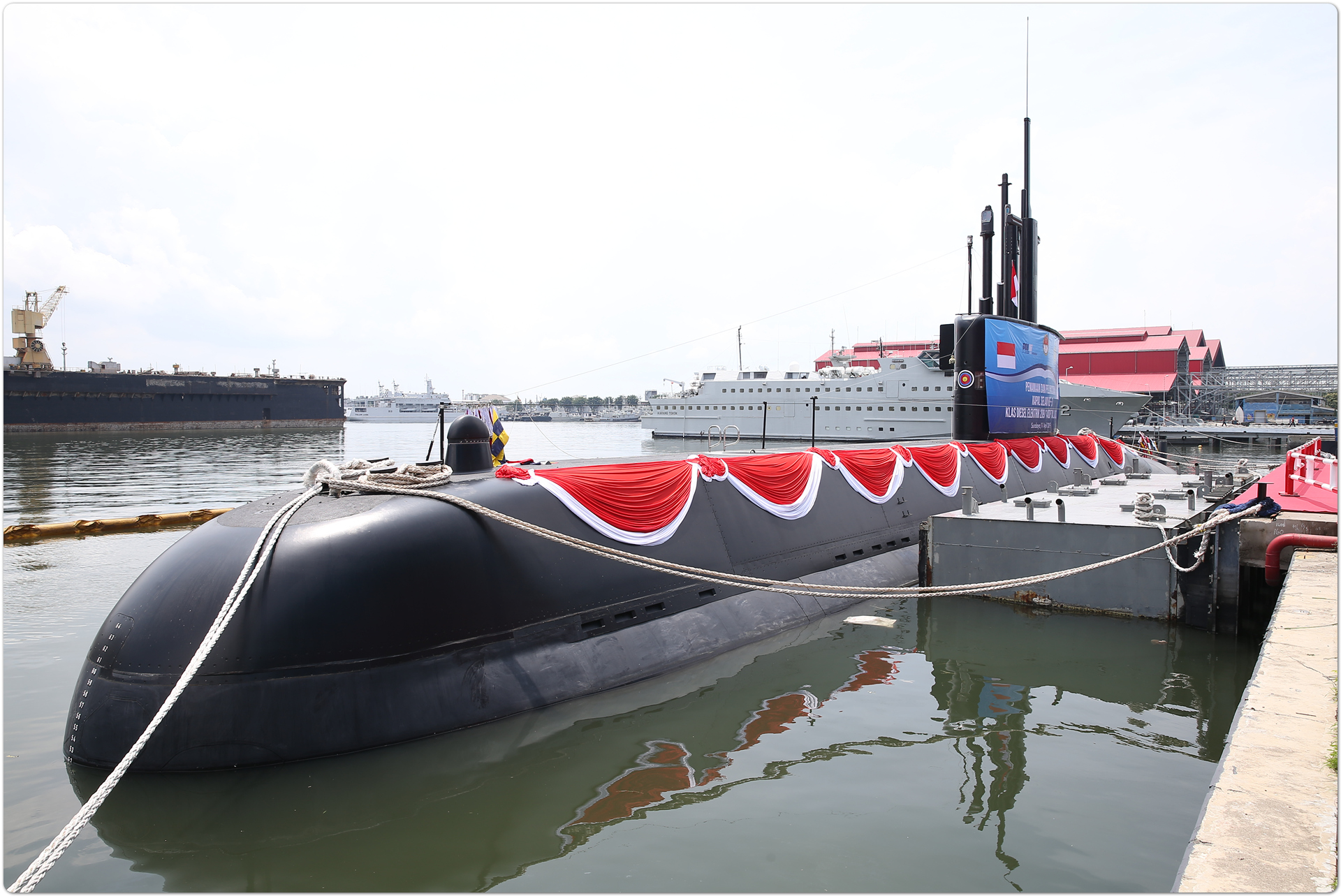
Will the controversial new Defence Minister use his position to continue armed forces modernisation or further his own political ambitions?
The surprising appointment of Prabowo Subianto as the new Indonesian Minister of Defence does not bode well for Indonesia’s international reputation or potentially its political stability. President Joko Widodo (Jokowi) defeated Prabowo twice in presidential elections, in 2014 and again earlier this year. When he refused to accept that Jokowi had officially been declared the winner, his supporters caused civil unrest and violence – something he did little to prevent.
That Jokowi now has him as the Minister of Defence says more about the murky undercurrent of party politics in Indonesia that it does about his suitability as the best man for the job. In 1998 he was banned from the United States due to alleged human rights violations. The question remains whether he will use his new position for political gains, perhaps undermining Jokowi, rather than continuing to modernise Indonesia’s armed forces.
He does have military experience; a retired Lieutenant General his service included serving as a commander in the Kopassus (Komando Pasukan Khusus) – Indonesia’s Special Forces – and finally as head of the Army Strategic Reserve Command (Kostrad) in 1998.
Defence Budget Priorities
Welfare costs, which have been boosted over the past few years under Jokowi, are a significant drain on the defence budget. According to a report in The Diplomat magazine (31/10/19): “More than half of the 2020 defence budget has been allocated for employee expenditure.”
Will Probowo keep the pace of Indonesia’s modernisation strategy, entitled Minimum Essential Force (MEF), which enters a third phase from 2020-2024. It has been focused on encouraging indigenous industry to increase its supply base into defence procurement, through Defense Industry Law 2012 (also called Law 16). Where foreign equipment is acquired, the contract also requires the foreign organisation to work through local firms, such as PT Dirgantara Indonesia (PTDI) in the case of military aviation.
In the latest government budget, the Ministry of Defense received a 16 percent increase year-on-year, rising from $7.68 billion to $8.9 billion. Given Indonesia’s archipelago status, with over 17,000 islands, and its history of involvement in insurgencies and against separatist movements such as in Papua and East Timor.
With China’s South China Sea expansion butting up to Indonesian territory in the shape of the Natuna Islands, Indonesia has been quick to open up a military base in Selat Lampa on Natuna Besar Island. Skirmishes to date have been focused on illegal fishing in Indonesian waters by Chinese fishing boats – with several having been sunk by the Navy.
From Brown to Blue Water
At the start of 2018, The Diplomat reported that “the Indonesian navy, with its Navy Blueprint 2013, aims to have a 274-ship force structure, 12 submarines, and three independent fleets operating across the country by 2024.”
It has sought to transition from a coast ‘brown water’ force to one with more powerful vessels that are better armed and have longer range. One of the areas of focus for the TNI-AI is the expansion of the submarine fleet.
On 11 April this year, the state owned PT PAL (Penataran Angkatan Laut) shipyard launched the Alugoro, the first diesel-electric submarine to be built in Indonesia although the third in the Nagapasa-class submarine, the first two being built by DSME in South Korea. These are in fact upgraded built-under-license German Type 209/1200 boats. Additional submarines are slated to be build in Surabaya. The president of PT PAL, Budiman Saleh revealed that his company would build nine more submarines as part of the DSME1400 project.

In addition to new fast attack craft, the TNI-AL has also invested in hospital ships. The first, build by PT PAL and based on a Type 124 Landing Dock design was handed over to its naval operators in January. As well as medical facilities, it can sail at 16 knots, carry and operate three helicopters, two landing craft, and a range of vehicles and additional personnel. The second vessel, commissioned in July has an expected delivery date of 2021.
The Marine Corps in Indonesia will receive fighting vehicles from Russia following a deal with Rosoboronexport (part of the Rostec State Corporation) in April for BMP-3F amphibious vehicles and BT-3F infantry fighting vehicles (of an unknown quantity).
According to a statement by Rosoboronexport, ‘the roof of the BT-3F accommodates a two-plane stabilised remote-controlled combat module with a 12.7mm machine gun…(it is also) equipped with a tele-thermal imaging sight with a laser rangefinder.” The organisation also states that there is good commonality between the BT-3F and BMP-3/BMP-3F which helps to reduce operating expenses and training costs.

Fighter Investment
Perhaps the biggest ongoing aircraft development programme for the TNI-AU is the KAI KF-X/IF-X multirole fighter. The abbreviation stands for Korean Fighter Xperiment/Indonesia Fighter Xperiment (KFX/IFX).
The cost of this joint development programme is being shared between the South Korean (60 percent) and Indonesian governments (20 percent), and Korean Aerospace Industries (KAI) which has a commitment to the final 20 percent. However, the Indonesian Ministry of Defence missed some payments due around 2017 and although payments did begin again, the Indonesian’s have been seeking to renegotiate the deal to snare a greater share of indigenous production as well a better standing regarding export rights.
According to an announcement by South Korea’s Defence Acquisition Programme Administration (DAPA) in September, the first KF-X prototype is due to undertake its first test flight by the end of 2021 following the conclusion of the critical design phase earlier this year. The stated delivery date for the rollout of the first operational KF-X aircraft is sometime during 2026.

Breaking news from Indonesia’s Antara news agency as this issue went to print was the announcement by TNI-AU Marshal Yuyu Sutisna, Chief of Staff, that the air force will formally request Lockheed Martin to supply another ‘two squadrons of Lockheed Martin’s newest F-16V Block 72 fighters”. The official request will be made in early January 2020. Indonesia already has 33 F-16s, 24 of which were refurbished F-16s up to near Block 52 standard and that were delivered once an arms embargo was lifted in 2005. These were added to nine older F-16A/B models that had been delivered in the early 1990s.
The new F-16V Block 72 configuration includes an advanced Active Electronically Scanned Array (AESA) radar.
Only a few months ago on 20 August the US State Defense Security Cooperation Agency announced the approval of a Foreign Military Sale (FMS) of 66 F-16C/D Block 70 aircraft Republic of China Air Force.
The TNI-AU is hedging its procurement loyalties however, as it still intends to acquire a squadron of Russian Sukhoi Su-35s, which is likely to incur problems with the US government potentially limiting or restricting further sales of military equipment.
At the start of the year, it was announced that the Indonesian Ministry of Defence through PTDI had ordered an additional eight Airbus H225M multirole helicopters to add to the TNI-AU’s existing force of six H225Ms.
These 11-ton medium helicopters are well regarded by the TNI-AU, and will again be completed by state-owned PTDI located at Bandung before being released to the military.
“We welcome Indonesia’s selection of our H225M helicopters for their expanding fleet,” said Airbus Helicopters executive vice president, Global Business, Ben Bridge. “With a trusted partner in PTDI, we stand ready to support the availability of Indonesia’s fleet.”
A Letter of Intent (LoI) was signed earlier in the year between the MoD and the state-owned PT Pindad organisation for the procurement of up to 22 Pandur II 8×8 armoured cars. They are originally manufactured by Excalibur Army, a company in the Czech Republic. A similar LoI was also issued in respect of Kaplan MT Modern Medium Weight Tanks (MMWT) developed by Turkish company FNSS Savunma Sistemleri.
The new Defence Minister apparently inherits a good base from which further progress can be made. But will this plan be his plan?












